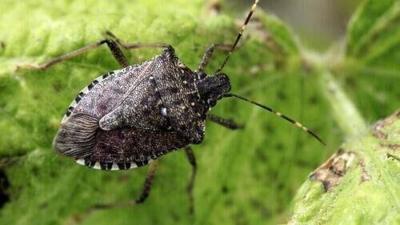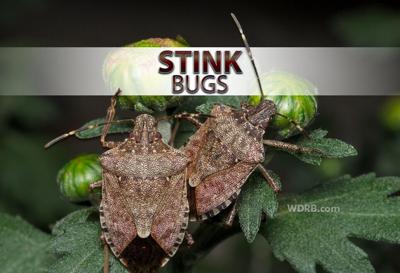The growing season is over! After three consecutive nights with either a frost or freeze, the Nation Weather Service and the Kentucky Department of Agriculture made it official last week. I'm curious, did you notice an invasion of stink bugs at your house? Stink bugs often seek shelter in homes once the weather becomes cooler each fall. They also will release a chemical alerting other stink bugs they have found a spot to hang out out, so stopping them from initial entry is key. With that said, I saw a few so far this year, but not many. Just in case you want to learn more about these stinky bugs, here's some info...
What Is A Stink Bug?
The stink bug is technically known as the Halyomorpha halys and also goes by the name brown marmorated stink bug. The stink bug has an interesting story because it is not native to the US, but unfortunately it was accidentally introduced likely sometime in the 1990s and was collected for the first time here in 1998. The stink bug can grow to about 3/4" long and wide.
The stink bug quite frankly doesn't have a lot of redeeming qualities. It is an agricultural pest and can really cause a lot of problems to fruit and vegetable crops. The stink bug we traditionally see in our area is the brown mamorated stink bug and it is well known to invade homes in the fall. As the temperatures get colder and colder, they seek refuge in homes and go into a state of hibernation. Interestingly, the warmth from the house can draw them out of hibernation in the winter.
The smell from the stink bug has been characterized as a pungent odor and some have described the stink as a scent that smells like cilantro. The stink bug actually emits the smell through its abdomen and was meant to defend it from predators. Unfortunately, touch or any handling of the bug will cause it to release the odor and they have become a real problem over the last few years.

Image Courtesy: AP Photo/Matt Rourke
How To Keep Stink Bugs Out?
- Seal cracks around windows, doors, electrical outlets, ceiling fans and light switches. Pay close attention to areas including around siding and utility pipes, underneath the wood fascia or other openings.
- Keep branches and shrubbery well trimmed; store firewood at least 20 feet away from the house and five inches off the ground.
- Replace outdoor lighting with yellow bulbs, which are less attractive to stink bugs.
- Use a vacuum to eliminate stink bugs indoors, empty the contents into a plastic bag and dispose of them immediately.
- A licensed pest professional can pre-treat homes for stink bugs before they become a problem.
Missy Henriksen, vice president of public affairs for the NPMA, said in a press release a couple years ago:
“Stink bugs have become a familiar sight in homes in nearly 40 states over the past few years as this invasive species continues to spread out further across the country. Although they are a significant agricultural problem and concern for farmers, they are also quite a nuisance to homeowners,. The reason stink bugs end up in our homes is because they are looking for a spot that will keep them safe from harsh winter elements such as rain and snow. You’ll often find them near windows and buzzing about lights, TVs or computer monitors that throw off light and warmth. Stink bugs will also release a chemical alerting other stink bugs to an area they’ve settled in, so it’s important to prevent entry in the first place.”












